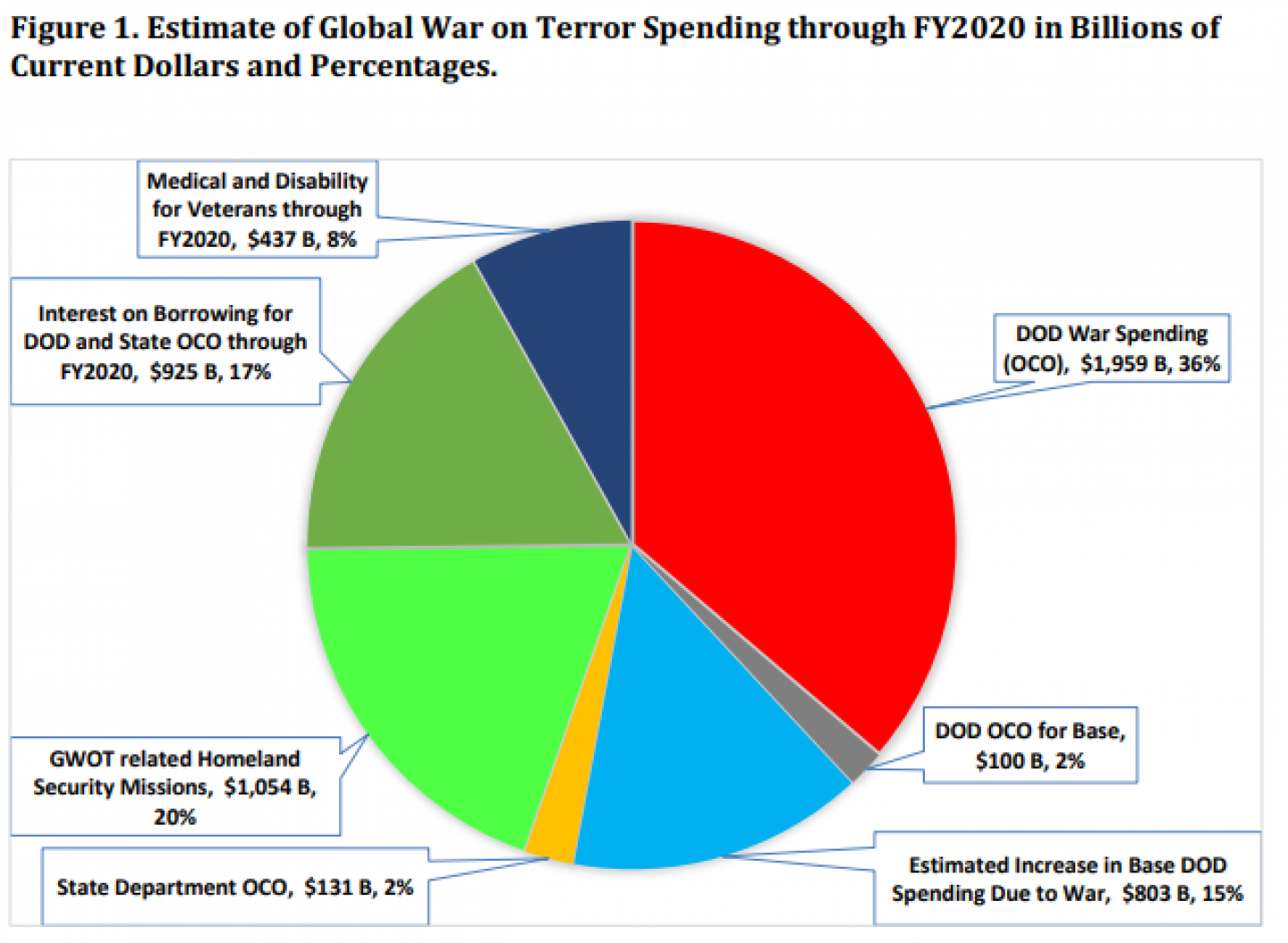United States Budgetary Costs and Obligations of Post-9/11 Wars through FY2020: $6.4 Trillion
Bottom Line: A combination of shifting classifications, opaque government accounting practices, and debates over what counts as "war spending" makes it incredibly difficult to determine exactly how much the Global War on Terror has and will continue to cost. But a new analysis from the Costs of War Project pegs the cost at over $6 trillion through Fiscal Year 2020.
The United States has sunk into and pledged so much money toward the Global War on Terror, that even if all war ended next year, expenditures would not slow or stop. But most estimates of war-related spending don't show the full picture. There are several reasons for this.
For one, no government report accounts for both Defense Department and non-Defense Department spending, a problem considering that non-DOD costs make up a large part of total war costs. Indeed, many of the non-DOD costs matter most, since they will continue even when fighting ends (healthcare for veterans, e.g.)
Similarly, while some reports analyze the cost per taxpayer, this overlooks the deficit spending that's gone on in the past decade.
This lack of standardization makes it hard for both civilians and policymakers to appreciate the full cost of the Global War on Terror. Civilians face an additional layer of confusion thanks to the constant renaming of various missions (i.e. how Operation Iraqi Freedom became Operation New Dawn in 2010).
To provide a clearer picture of exactly what the Global War on Terror costs, the Costs of War Project has analyzed budgets for the Departments of Defense, State, and Homeland Security. Their analysis "attempts to include all the relevant major post-9/11 war-related spending."
This is easier said than done. It's hard to calculate exactly what DOD has spent on post-9/11 wars, since "Defense appropriations related to the Global War on Terror have been treated as emergency appropriations, now called Overseas Contingency Operations (OCO)" since the 9/11 attacks. Certain OCO funs have been appropriated to the State Department, which further complicates things. And DHS hasn't provided detailed breakdowns of its expenditures since 2017.
Further complicating this is the ongoing cost of medical and disability care for post-9/11 veterans. These costs are significant. These veterans comprise about 21 percent of all veterans and 16 percent of veterans served by the VA. These veterans also tend to be less healthy than their counterparts from previous wars.
All told, the Costs of War Project estimates that "The United States has appropriated and is obligated to spend an estimated $6.4 Trillion through Fiscal Year 2020 in budgetary costs related to and caused by the post-9/11 wars—an estimated $5.4 Trillion in appropriations in current dollars and an additional minimum of $1 Trillion for US obligations to care for the veterans of these wars through the next several decades."
Access the full paper here.





